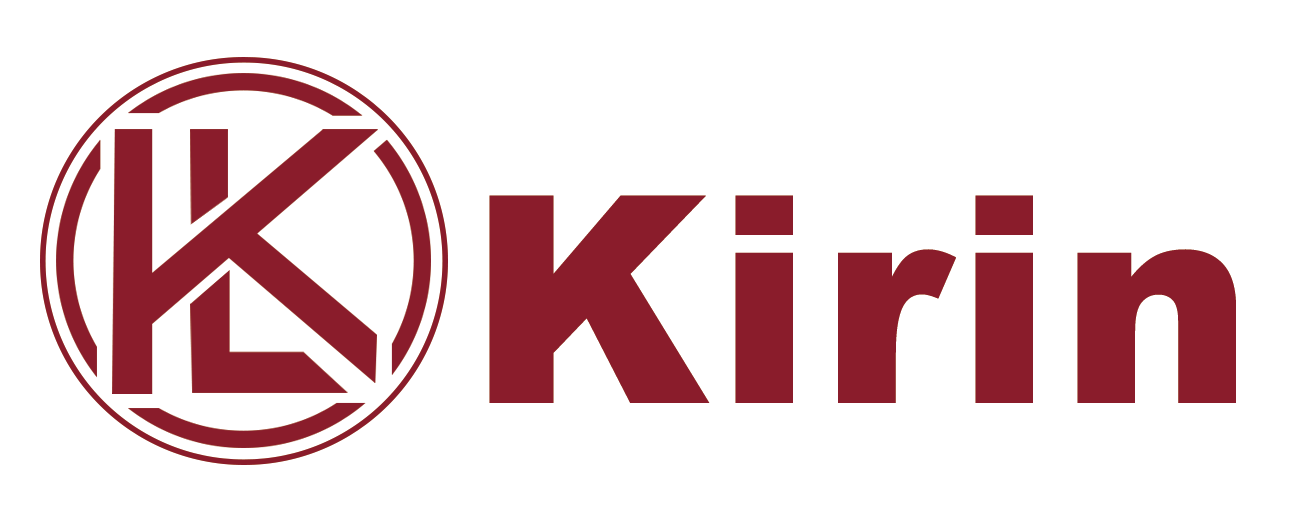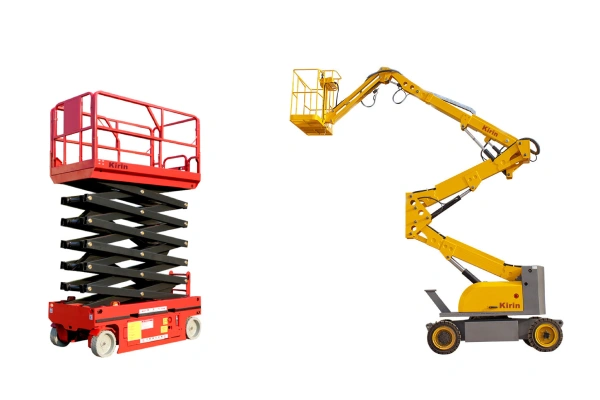When it comes to aerial work platforms, two of the most common types you’ll encounter are articulating boom lifts and straight boom lifts. Both are indispensable tools for reaching elevated work areas, but they achieve this in fundamentally different ways, making each suited for specific applications. Deciding which is “better” isn’t about one being inherently superior, but rather which one aligns more perfectly with the demands of your project.
Understanding Articulating Boom Lifts
Articulating boom lifts, often referred to as “knuckle booms,” are characterized by their multiple hinged sections in the boom arm. These sections can bend and extend, allowing the platform to maneuver “up and over” obstacles. Think of it like a human arm with an elbow and shoulder joint, capable of intricate movements.
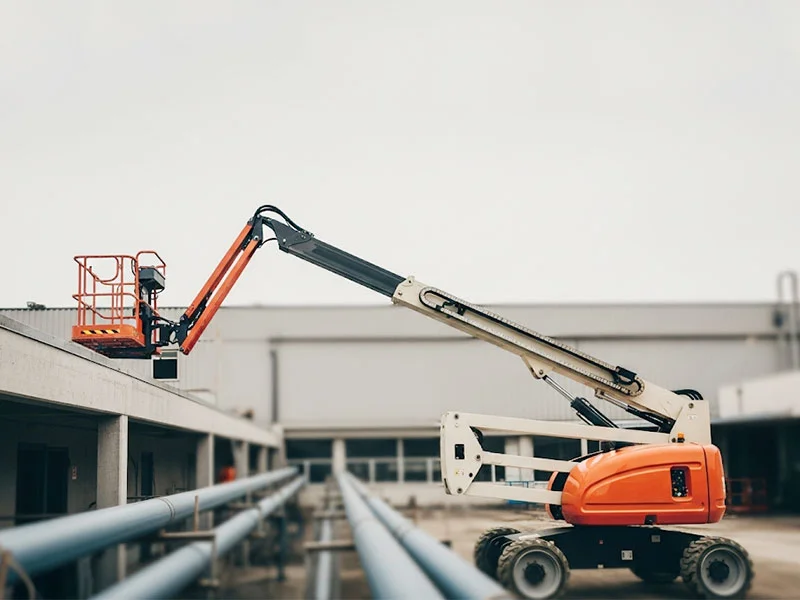
Pros of Articulating Boom Lifts
- Excellent Maneuverability: The primary advantage of an articulating boom lift is its ability to navigate around obstructions. This makes them ideal for tight spaces, crowded construction sites, or areas with irregular layouts where direct vertical access isn’t possible.
- Versatility: They can reach over fences, machinery, or even building sections, offering access to areas that would be impossible with a straight boom lift.
- Compact Footprint: Many articulating models are designed to be relatively compact, allowing them to operate in confined areas.
Cons of Articulating Boom Lifts
- Less Horizontal Reach: While great for “up and over” movements, articulating boom lifts generally offer less horizontal outreach compared to a straight boom lift of similar size.
- More Complex Operation: The multiple boom sections can make them slightly more complex to operate for beginners, requiring a bit more finesse to position precisely.
- Maintenance: More moving parts can sometimes translate to more complex maintenance, though modern designs are highly reliable.
Understanding Straight Boom Lifts (Telescopic Boom Lifts)
A straight boom lift, also known as a telescopic boom lift or stick boom lift, features a boom arm that extends in a straight line, much like a telescope. This design prioritizes maximum reach and stability, extending directly upwards and outwards from the base. When you need to go high and far, a straight boom lift often comes to mind.
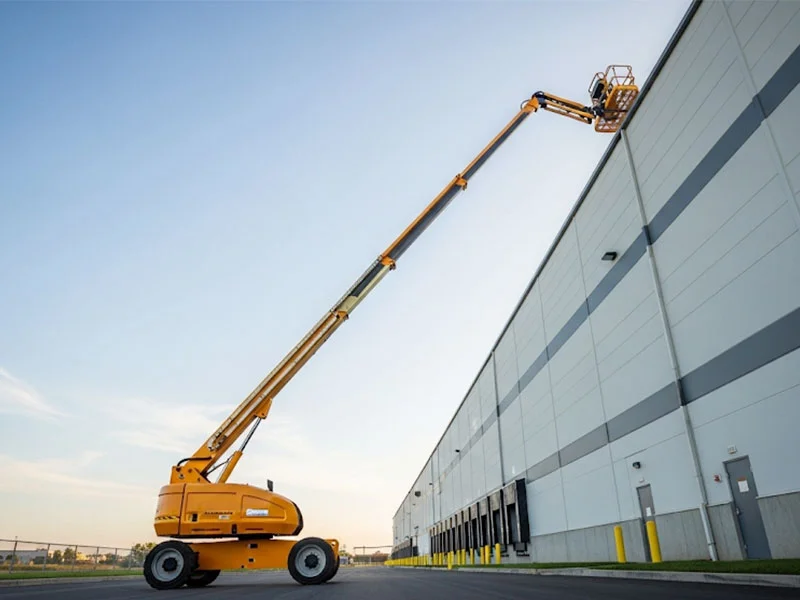
Pros of Straight Boom Lifts
- Superior Horizontal and Vertical Reach: The most significant advantage of a straight boom lift is its impressive outreach. They can extend to great heights and significant horizontal distances, making them perfect for tasks requiring long-range access.
- Faster to Position: Due to their simpler extension mechanism, a straight boom lift can often be deployed and positioned more quickly, especially for direct access tasks.
- Greater Platform Capacity: Many straight boom lift models offer higher platform capacities, allowing for more workers and heavier tools.
- Ideal for Open Spaces: Their design excels in open environments where there are no significant overhead obstructions to navigate.
Cons of Straight Boom Lifts
- Limited Maneuverability Around Obstacles: Unlike articulating booms, a straight boom lift cannot go “around” obstacles. If there’s something directly in its path, it may not be able to reach the desired work area.
- Larger Footprint: Due to their extended reach, straight boom lifts often require a larger operational footprint.
- Less Versatile in Confined Spaces: Their lack of articulation makes them less suitable for tight or complex environments where intricate maneuvering is required.
Key Differences at a Glance (Comparison Table)
| Feature | Articulating Boom Lift | Straight Boom Lift (Telescopic) |
| Boom Design | Multiple hinged sections | Single, telescoping section |
| Maneuverability | Excellent, around obstacles | Limited, direct access only |
| Reach | Good vertical, limited horizontal | Excellent vertical and horizontal |
| Best For | Confined spaces, obstacles | High reach, open spaces, direct access |
| Complexity | More complex to operate | Simpler to operate |
| Footprint | Often more compact | Generally larger |
When to Choose Which?
The decision between an articulating and a straight boom lift hinges on the specific demands of your project.
Choose an Articulating Boom Lift if:
- You need to work in confined spaces or navigate around existing structures, machinery, or landscaping.
- Your primary need is to go “up and over” obstacles to reach a work area.
- The work site has irregular terrain or multiple obstructions.
Choose a Straight Boom Lift if:
- You need to reach extreme heights or significant horizontal distances.
- The work area is relatively open and clear of obstructions.
- Speed of deployment and maximum reach are your top priorities.
- You require a higher platform capacity for more workers and heavier tools.
- You are looking for a reliable, straightforward way to get to high, distant points, a straight boom lift is often the best fit.
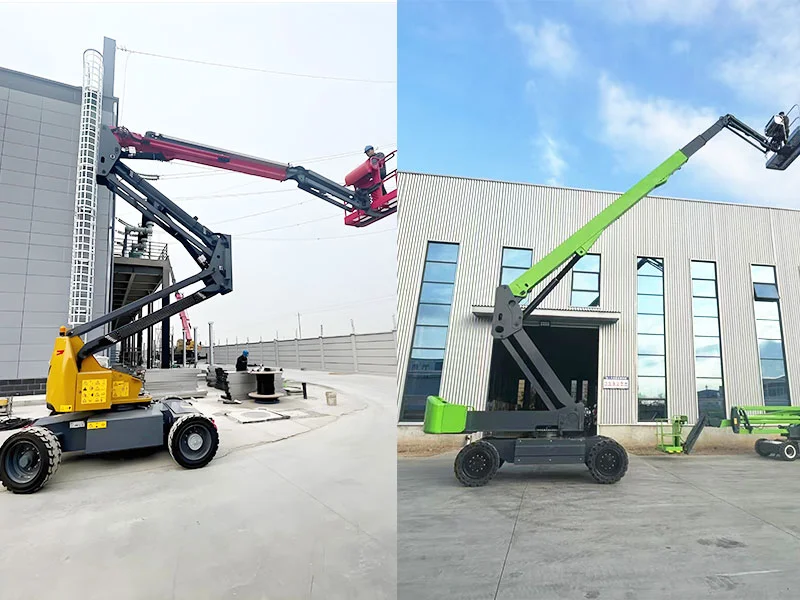
Factors to Consider When Choosing
Beyond the boom type, several other factors should influence your decision:
- Height and Reach Requirements: Precisely measure the maximum height and horizontal outreach needed for your project.
- Worksite Environment: Assess the terrain (flat, uneven, indoor, outdoor), presence of obstacles, and available maneuvering space.
- Platform Capacity: Determine the weight of workers, tools, and materials that will be on the platform.
- Power Source: Consider electric (for indoor, emission-free work) or diesel (for outdoor, heavy-duty applications).
- Budget: Rental and purchase costs can vary significantly between models and types.
- Operator Skill: While both require trained operators, the nuances of an articulating boom lift might require a bit more experience.
Conclusion
Both articulating and straight boom lifts are powerful tools, but they serve different purposes. The articulating boom lift offers unparalleled maneuverability in complex environments, allowing you to reach tricky spots. Conversely, the straight boom lift excels in delivering maximum height and horizontal reach in open areas, proving its worth when distance is key.
There’s no single “better” option; the ideal choice depends entirely on the unique demands of your project. By carefully evaluating your needs against the strengths of each type of boom lift, you can ensure you select the equipment that maximizes efficiency, safety, and productivity on your job site.
FAQs
Q: Can a straight boom lift be used indoors?
A: While some electric models exist, straight boom lifts are generally more commonly used outdoors due to their size and the need for ample maneuvering space.
Q: Are articulating boom lifts safer than straight boom lifts?
A: Both types of boom lifts are safe when operated by trained personnel and according to manufacturer guidelines. Safety depends more on proper training, maintenance, and adherence to safety protocols than on the type of lift itself.
Q: How often do boom lifts require maintenance?
A: Regular maintenance is crucial for both types of boom lifts. This includes daily pre-operation checks, routine inspections, and scheduled preventative maintenance as per the manufacturer’s recommendations, usually every 3-6 months depending on usage.
